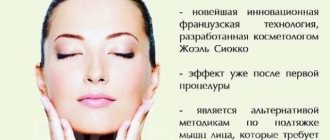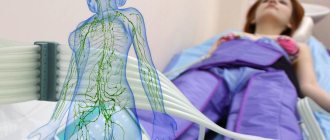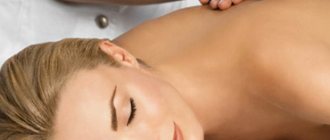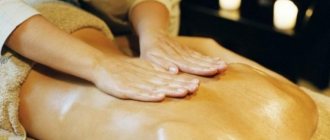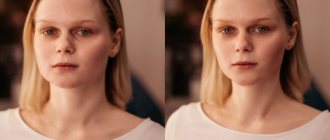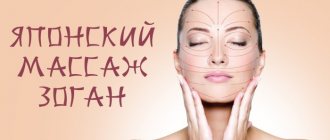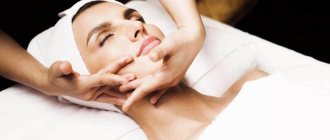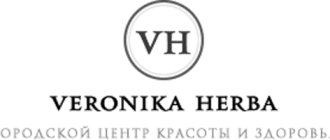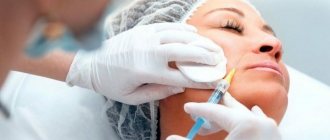Pain after therapeutic massage is a fairly common symptom, which more than 30% of patients complain about. Massage refers to reflexology methods and is based on reflex irritation of skin receptors that send impulses to the central nervous system. Depending on the flow of impulses entering the neurons, it is possible to achieve a tonic or relaxing effect necessary to normalize muscle-tonic tension in the paravertebral muscles.
After a massage, your back and neck hurt – is this normal?
Painful sensations after massage sessions can be caused by both insufficient physical training and physical inactivity, as well as gross mistakes during the procedure itself. For example, one of the consequences of improperly performed massage is displacement or slipping of the vertebrae (spondylolisthesis), which, in the absence of a clinically significant effect from conservative therapy, may require the use of surgical correction methods.
Stages of recovery after a fracture
In order not to aggravate the situation and cause even more harm to the body, it is necessary to treat a fracture at home in accordance with a clear sequential scheme. It provides the following main recovery stages:
- The first stage begins immediately after the plaster is removed. At this time, the damaged area needs to be rubbed and massaged. Start exercises and massage almost immediately, but they should be light and not overload the still weak muscles. To stimulate recovery processes, local preparations in the form of a gel or cream can be applied to the area, but only as prescribed by a doctor.
- The second stage begins when the muscles, ligaments and other structures become a little stronger. To increase tone and motor activity, begin exercise therapy, physiotherapy, and perform more complex and intense exercises.
- The third stage is the final one. During this period, you can already increase your activity and go for long walks. The doctor can give a referral for treatment at a sanatorium or health center.
Self-massage for arthrosis
The listed techniques of mechanical impact on the periarticular area can be used independently at home. But at the same time, it is important to understand that, without special education and skills, a person is capable of harming himself.
Excessive force on the affected joint, incorrect direction of movement or erroneous order of manipulations lead to increased symptoms and deterioration of the general condition. Thanks to the knowledge and experience of our clinic specialists, we guarantee long-term positive results.
Self-massage for arthrosis, after consulting with a doctor, can be done with the help of auxiliary devices. The simplest wooden roller massagers for the back allow you to effectively work out the area of the spine, shoulder blades, lower back, and sacrum. Needle ones are available in the form of balls, cylinders, and mats. Ball-shaped and cylindrical varieties are suitable for massaging the feet and shoulders; the Kuznetsov applicator is suitable for the back.
Needle rollers and mats Lyapko
Manufacturers also offer different models of vibrating massagers. These devices, powered by mains or batteries, are designed to affect different parts of the body. Electric massagers, when used correctly, activate blood circulation, effectively relieve pain, and normalize muscle tone.
We combine proven techniques of the East and innovative methods of Western medicine.
Read more about our unique method of treating arthrosis
Assistive devices and additional activities
Simple additional remedies that can be used at home will help increase the patient’s comfort during recovery after a broken leg:
- Orthopedic insoles. They help not to overload the injured limb, relieve stress from bones and joints.
- Belt. Special straps are attached to the bed, so the patient receives additional support when sitting down or standing up. Patients with a hip fracture especially need such a device.
- Crutches or cane. Depending on the severity of the injury, in the early recovery period the patient may require assistance while walking. Auxiliary supports will relieve excessive stress from the limbs and give the patient confidence during movements.
Rehabilitation measures provide for a uniform increase in the load on the body. Initially, the doctor prescribes simple breathing exercises to the patient, which help saturate the body with oxygen and develop the respiratory system. Afterwards, exercise is added, which is aimed at developing general body mobility. After about a month, physical exercises are expanded and divided into two groups:
- general – aimed at improving the health of the whole body;
- special ones - restore the damaged area.
Properly selected gymnastics and a course of physical therapy restore blood circulation, strengthen muscles, resume motor activity and prevent complications.
Recovery in a supine position
For fractures of the extremities, recovery must begin when the patient is in a supine position and cannot stand. Only an early start of rehabilitation allows you to achieve maximum results. Otherwise, the muscles become inactive and weaken, causing the bones to heal incorrectly.
The complex of therapeutic exercises for a bedridden patient includes:
- shoulder lifts;
- lifting on the forearms;
- hand rotations;
- flexion, extension, pulling the healthy leg to the chest;
- contraction and relaxation of the muscles of the legs and arms;
- raising, abducting, bringing the injured limb to the body.
At the initial stage, these exercises should be performed under the supervision of a specialist and with his help. Over time, the patient will be able to perform gymnastics independently.
Could pain be normal?
Physiological pain after a massage may well be the norm, especially if the person previously led a sedentary lifestyle, did not play sports, spent most of the time in a sitting position or did not walk much. In such people, after a massage, a large amount of lactic acid accumulates in the muscles, which is formed in the body as a result of the breakdown of glucose. The result is an effect similar to muscle pain in athletes after long and grueling training, but the muscles of an unprepared person cannot quickly cope with such a load, which provokes the formation of severe pain.
Pain after a massage may be caused by a buildup of lactic acid.
Another cause of muscle pain after a massage is a change in the strength of tonic tension. If the muscles have been in a spasmodic state for a long time, the process of returning them to their normal position will be painful (“the crooked” muscle slowly straightens, freeing pinched vessels and nerve endings). To completely restore muscle fiber, about 3-5 procedures are required.
Discomfort after a massage may occur due to a gradual improvement in the condition of spasmodic muscles.
Normal (physiological) pain has the following characteristics:
- decreasing intensity after each subsequent session;
- disappearance of pain within 48 hours after the procedure (may reappear if these are the first sessions);
- no signs of secondary inflammation (redness, swelling, high temperature, etc.).
After each subsequent session, the pain should become less intense and short-lasting
The maximum intensity of pain is observed after the first session. Despite the fact that already from the second procedure the pain decreases, it can persist for another 2-4 sessions. Complete disappearance of painful sensations is achieved by the 4th-5th procedure. With severe spinal deformities, moderate pain may persist throughout the entire course of treatment, and its disappearance occurs by the middle of the second course (each of them consists of 10 procedures).
Working with gait
As part of rehabilitation after a leg injury, it is necessary to work on restoring gait. One of the most effective options is exercise on an exercise bike, to which the patient must be allowed by a doctor if there are no contraindications.
In addition to training on the simulator, it is also important to perform special exercises:
- grab a small object with your toes and hold it suspended;
- roll the ball with the foot of the injured limb;
- roll from toes to heels and back;
- walk backwards, sideways.
Classes should be continued until the patient’s motor functions are completely restored and swelling and pain go away.
Pain relief medications
To make the pain go away after a massage, you can use medications in the form of ointments, emulsions, and creams. It is better to consult with your doctor about which remedy is best to use in each specific case. The table below lists the drugs that are most often used for these purposes, but it must be taken into account that each of them has its own contraindications (the list of contraindications can be found in the instructions).
Medicines to relieve pain after massage
| Pharmacological group | Drugs |
| Nonsteroidal anti-inflammatory drugs with analgesic effect. |
|
| Camphor oil and camphor alcohol (2%-10%). |
|
| Warming ointments with the addition of turpentine emulsion, camphor or formic alcohol. |
Larkspur with turpentine (balm)
|
| Derivatives of nicotinic acid. |
|
Apply gels and ointments with gentle stroking movements until completely absorbed, up to 2-3 times a day. The recommended duration of use without consulting a doctor is 3-5 days.
If there is no effect from local application, it is allowed to take drugs from the group of non-narcotic analgesics in the form of tablets or capsules (“Analgin”, “Baralgin”).
"Baralgin"
You can take these medications for no more than 2-3 days: if after this period the pain does not go away, you need to go to the hospital to exclude possible pathologies.
Video - Muscles hurt after a massage
Pain after a massage is a common occurrence and may well be of a physiological nature. If the unpleasant sensations do not go away within 2-3 days after the session, and after each subsequent procedure they become stronger, you should seek the help of a specialist: perhaps the massage is performed incorrectly, or the patient has contraindications for it.
Sometimes a massage is simply necessary, but a specialist does not have the opportunity to complete the full course. In this case, it is recommended to learn a simple self-massage technique to knead your neck and shoulders on your own. Detailed information can be read in this article.
External means
After the cast is removed, the patient may experience pain and swelling for a long time. To get rid of these unpleasant manifestations of injury, the doctor may prescribe ointments and gels that relieve discomfort. Such drugs have important effects:
- analgesic – relieves pain, improves motor abilities;
- anti-inflammatory – improves tissue condition, relieves inflammation, redness, swelling;
- muscle relaxant – promotes muscle relaxation, relieves excessive tone, improves the effect of painkillers;
- regenerating – stimulates restoration processes, activates metabolism in damaged tissues.
External medications have much less negative effects than oral medications. Therefore, many doctors prefer ointments and gels with local action.
Nutrition
The recovery stage must be accompanied by a proper diet. During this period, the body needs more vitamins and nutrients, which must be obtained not only from food, but also from additional vitamin supplements.
During the period of active recovery, you need to saturate your diet with:
- protein (found in poultry, fish, meat);
- calcium and silicon (can be obtained from cottage cheese, oatmeal, beets, cheese, parsley, sesame);
- vitamins B, C and D (found in maximum quantities in fish oil, liver, bananas, legumes, citrus fruits).
While recovering from a fracture, you need to give up alcohol, sweet carbonated drinks, coffee, chocolate, fatty and salty foods.
How does the lymphatic system work?
There are many lymphatic capillaries in all human organs and tissues.
They are closed at one end and unite into larger lymphatic vessels. As blood flows through small arteries, some of its liquid part, plasma, leaks into the tissues. Tissue fluid is partially absorbed into small veins and partially into lymphatic capillaries. Thus, it does not accumulate in tissues. All lymphatic vessels empty into lymph nodes. Here the lymph is filtered and cleared of foreign agents. Lymphocytes, the cells of the immune system, are formed in the lymph nodes. Usually many small afferent vessels flow into the lymph node, and only 1-2 efferent vessels exit.
Lymphatic vessels unite into larger ones and form two main ducts: the thoracic and right lymphatic. They flow into the right and left subclavian veins, respectively. Thus, the lymphatic system cleanses tissue fluid and returns it to the bloodstream.
Massage
Therapeutic massage after fractures involves the use of specific techniques:
- rubbing – active movements improve blood circulation and reduce pain;
- kneading – restore muscle tone, improve tendon mobility;
- stroking – light stroking movements relax muscles, improve microcirculation;
- effleurage - improves blood flow and increases muscle contractility.
The massage therapist selects a treatment course taking into account the characteristics of the injury and the exact location of the fracture. A course of therapeutic massage helps to avoid muscle atrophy and weakness, improve mobility, relieve swelling and pain.
